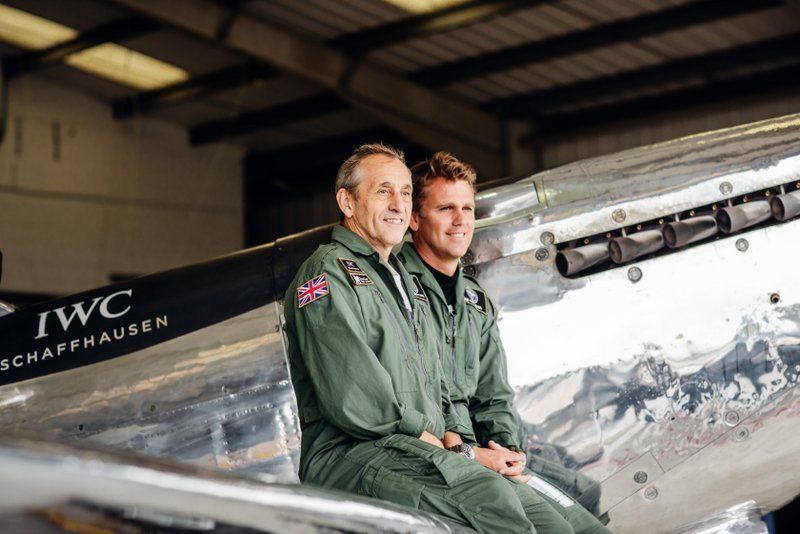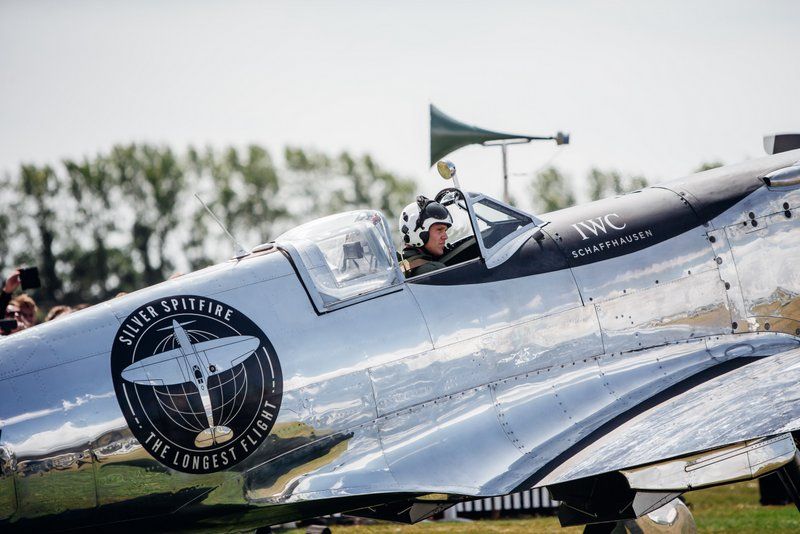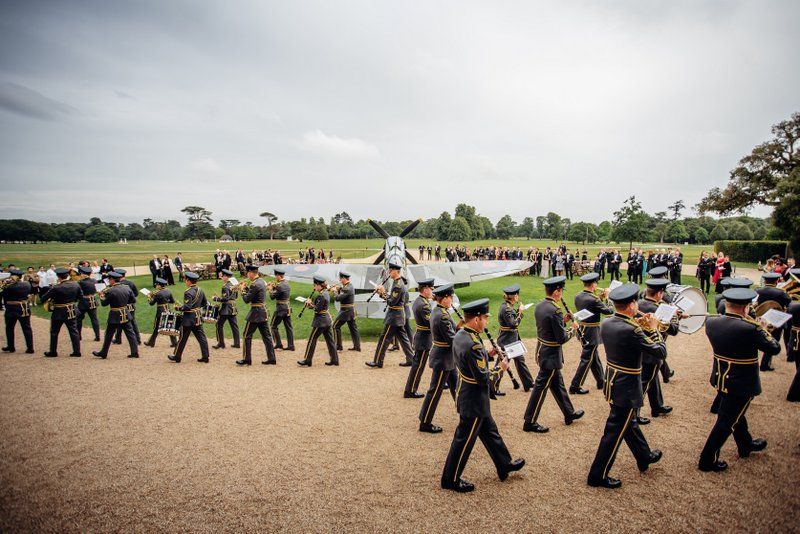✨You Can Touch the Times Square New Year's Eve Ball!
Find out how you can take home a piece of the old New Year's Eve ball!


A silver Spitfire plane that served in World War II, flying more than 51 missions during the war, is en route to the New York City area in an attempt to complete the world’s longest flight. Leaving from Goodwood Aerodrome, in West Sussex, United Kingdom on August 5th, the Spitfire is being piloted by two British aviators, Steve Boultbee-Brooks and Matt Jones on an around the world flight that will take it to 30 countries on a 27,000 mile route that has approximately 100 flight segments. The Spitifre was originally expected to arrive to Teterboro Airport today but we are told it is currently held up in Canada due to the weather, which gives New York City-area residents more time to plan for its arrival! [Update: It has arrived as of August 20th!]
This Spitfire MK IX plane is one of the original aircrafts made in Castle Bromwich in 1943 by the British company Vickers Supermarine ltd. According to the official history on the Silver Spitfire website, the plane was designed as a “short-range, high-performance interceptor aircraft” by R.J. Mitchell, an English aeronautics engineer. Mitchell was responsible for making the Spitfire’s well-known elliptical wing into its thinnest cross-section possible, which enabled it to fly faster than other fighter planes of its time period. It is a single engine, single seat plane — with Brooks and Jones flying separate portions of the journey.

Pilots Steve Boultbee Brooks and Matt Jones. Photo by Remy Steiner/Getty Images for IWC
This particular Spitfire, designated historically as MJ271, flew with the RAF, first with the 118 Squadron where the plane escorted B-24, B-17 and B-26 bombers attacking German V1 launch sites and on fighter sweeps in France. In 1944, it joined the 132 Squadron performing 28 operational sorties, including “close escort for B-25 and B-26 bombers as well as dive bombing of targets on the French coast, before having a ‘wheels-up’ landing at RAF Ford during the night of May 9th 1944.” Finally in 1945, it joined the Canadian 401 Squadron, which had been heavily involved in D-Day and the European offensive. With them, the plane flew ten dive-bombing missions.

Photo by Remy Steiner/Getty Images for IWC
Following the plane’s retirement and decommissioning, it was in a storage museum for over 70 years until 2017 when a two-year restoration began to make it ready for its record-breaking flight attempt,The plane was restored piece by piece, rivet by rivet, with the guns removed. It has been dialed back to its aluminum finish, in a deliberate move to draw attention to the plane’s aesthetics. The Spitfire website states that it seeks to “highlight the timeless beauty” of the plane’s design, “drawing attention to the unique and famous shape of the airframe.
The two pilots, Jones and Boultbee-Brooks run the Boultbee Flight Academy, the world’s first Spitfire training school and approved Spitfire flight provider. The two pilots have had a dream to flying a Spitfire around the world, and got their chance partially in partnership with IWC Schaffhausen, a Swiss watch manufacturer that in the main partner for the expedition. It has also supplied the pilots with the flight’s official expedition watch, the “Pilot’s Watch Timezoner Spitfire Edition ‘The Longest Flight'” which makes it possible to set the time to a different time zone by turning the bezel to the desired location.
Beyond the adventure and the record-breaking potential of “Silver Spitfire — The World’s Longest Flight,” there appears to be a moral imperative underlying the mission. According to the Silver Spitfire website,
The Spitfire embodies not only a pinnacle in aerospace engineering and design but commemorates a generation of intrepid aviators prepared to stand up to oppression and make the ultimate sacrifice in pursuit of freedom.
The expedition will reunite the Spitfire with the many countries that owe their freedom, at least in part, to this iconic aircraft. The unmistakable sight and sound of this aircraft once again gracing the skies aims to inspire future generations more than eighty years after R.J. Mitchell’s timeless design first graced the skies.
In the great tradition of exploration, we seek to challenge ourselves by setting out to complete a trip that has never been attempted. By pushing the boundaries of what’s possible in this iconic single-engined aircraft we hope to climb “a pilot’s Everest.”

The official start of the mission on August 5th, 2019. Photo by Remy Steiner/Getty Images for IWC
To date, it has flown over 7,500 kilometers and stopped in the Faro Islands, Greenland and Canada. In the United States, it will make its first stop at Teterboro, an airport in New Jersey probably glad to have more positive news than being Jeffrey Epstein’s arrest location. It will then head to Beaver County, Pennsylvania; Huntington, Indiana; Oskaloosa, Iowa; Cozad, Nebraska; Denver, Colorado; Colorado Springs; Cortex, Colorado; Nellis Air Force Base, Nevada; Fallon Naval Air Station, Nevada; Mojave Air & Space Port, California; Santa Monica, California; Hayward, California; Roberts Field, Oregon; Everett, Washington state; Northway, Alaska; Nenana, Alaska; Galena, Alaska; and Nome, Alaska.
From there, the Spitfire will head to Russia, Japan, Taiwan, Hong Kong, Vietnam, Thailand, Myanmar, Bangladesh, India, Pakistan, United Arab Emirates, Bahrain, Kuwait, Saudi Arabia, Jordan, Egypt, Cyprus, Greece, Italy, France, Switzerland, Germany, and Holland.
Stay tuned on Untapped Cities, as we report on the updated arrival of the Spitfire and greet the plane! Find more information on the official website for the Silver Spitfire.
Next, check out how you can get your historic airplane fix right here in Brooklyn, in the hangars at Floyd Bennett Field.
Subscribe to our newsletter